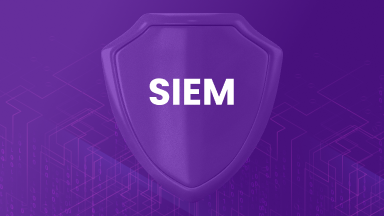Veeam Optimizes Object Storage Data Management
In the ever-evolving data management landscape, businesses constantly seek innovative solutions to enhance their backup and recovery processes.
One solution that has gained prominence is the Veeam Smart Object Storage API. This powerful tool offers a gateway to improved efficiency, scalability, and flexibility in handling data backups.
Understanding the Veeam Smart Object Storage API’s features and benefits will equip you with advanced tools for efficient information handling, keeping you at the forefront of the technological curve.
Understanding Object Storage and Its Use Cases
Before diving into the specifics of the Veeam Smart Object Storage API, it’s crucial to grasp the concept of object storage itself. Unlike traditional file systems, which organize data hierarchically, object storage stores data as discrete units called objects.
Each object contains data and metadata, making it a self-contained and highly scalable storage solution. Object storage in the Veeam world has historically been deployed as tier-2 or beyond, such as a cloud target for long-term archival.
Recently, there’s been a rise in demand for on-premises deployments, although these often lack the performance needed for Veeam’s recovery features.
Critical Use Cases of Object Storage
- Video Surveillance: Ideal for managing vast video data volumes, object storage supports surveillance systems with scalability, ensuring effortless storage and footage access.
- Backup & Recovery: Object storage provides a secure and reliable foundation for data backup and efficient recovery processes, crucial for maintaining data integrity.
- Media & Entertainment: Object storage is invaluable in media and entertainment, enabling efficient multimedia asset management and quick content retrieval.
Veeam Smart Object Storage API Overview
The Veeam Smart Object Storage (SOS) API bridges Veeam Backup & Replication and object storage repositories. This integration allows organizations to leverage the benefits of object storage, such as cost-effectiveness and scalability, while seamlessly incorporating it into their existing backup infrastructure.
It effectively achieves the same direct integration level but without additional plug-ins.
Smart Entities: Enhancing Veeam Backup Efficiency
Veeam has a new construct when backing up to SOS-accelerated object storage repositories known as Smart Entities.
This capability helps direct the placement of data as well as load balance concurrent streams across multiple network interfaces.
Here’s how it works:
- Data Communication: Veeam Backup & Replication v12 + communicates with the SOS-accelerated repository, sharing data and client details (VM name, server name, share name, etc.)
- Node Allocation: The repository then guides Veeam on which node to send each smart entity.
- Network Optimization: Lastly, it provides specific network interface IP addresses, allowing direct access for data streams to spread across all NICs, boosting throughput and speed.
Levels of SOS Integration
Two different SOS integration levels are available today, denoted in the Veeam UI as “S3 Compatible” and “S3 Integrated.”
Here are their key features and benefits:
Capacity Insights (S3 Compatible & S3 Integrated Feature)
One of the fundamental capabilities the API unlocks is for Veeam to query the object storage repositories and discover capacity details, such as used vs. free space. This is a vital piece of critical information when forecasting existing storage consumption & future growth requirements.
Cache-Control (S3 Integrated)
The ability to expose caching to Veeam, which accelerates ingest speeds, is another critical enhancement the API unlocks. It allows Veeam to write quickly before the data is ultimately committed to the underlying storage.
Storage Access Control (S3 Integrated)
In the communication process between Veeam and the SOS-accelerated object storage target, distinct IP addresses are relayed to Veeam, allowing for the precise routing of each smart entity to its unique network interface.
When scaled up, this technology enables each network interface in a multi-node cluster to receive a data stream from Veeam directly, bypassing the need for a control or master node.
This advantage is notable over erasure-coded solutions, which often require intermediary steps. The direct connection minimizes additional network hops or ‘middle-men,’ effectively reducing the potential for increased latency.
Veeam Smart Object Storage SOSAPI: The Next-Gen of Data Handling
The Veeam Smart Object Storage API allows businesses to unlock scalability, cost-efficiency, and improved performance by seamlessly integrating object storage repositories into their infrastructure.
Ootbi, by Object First, not only provides immutability out of the box with Zero Access but is fully integrated with this fantastic API, delivering incredible performance to Veeam users’ demand!
Request a demo to see how Ootbi can easily integrate with the Veeam Smart Object Storage API, standing out as a valuable asset in pursuing streamlined and resilient data management.


.webp)
